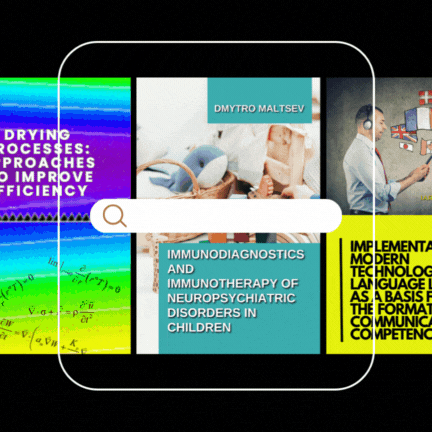Application of virtual and modeling equipment with NC while teaching the engineering technology
DOI:
https://doi.org/10.15587/1729-4061.2013.8934Keywords:
engineering technology, NC equipment, education, advanced technologies.Abstract
The article analyzes the state of laboratory facilities of the departments teaching the engineering technology and ways of the improvement to the level of new equipment. The article describes the implementation of the program SprutCAM to create a virtual laboratory of advanced technologies. It presents the examples of the program application to present sections of technological disciplines, focused on the use of NC equipment. The possibilities of the program SprutCAM were analyzed to simulate the circuits of advanced NC equipment and the processes of processing on them. The article describes an example of prototyping of NC equipment for laboratory works. It also describes the application of interaction of programs of components modeling, development of control programs for NC equipment and coordinated control of drives of modeling NC equipment in teaching process. The application of virtual and modeling NC equipment in teaching process is a forced measure that increases the level of training of specialists and interest to the acquired specialty.References
- Чесноков, А.В. Передовые технологии машиностроения в образовании, достижения и проблемы [Текст] / А.В. Чесноков, А.Н. Кирсанов // Наукові вісті Далівського університету. – 2012. – №5. – Режим доступа: http://www.nbuv.gov.ua/e-journals/Nvdu/2012_5/12cavdip.pdf
- Кузнецов, Ю.Н. Модульный принцип создания настольных фрезерных станков, управляемых от компьютера [Текст] / Ю.Н. Кузнецов, А.А. Степаненко // Вісник СевНТУ: зб. наук. пр. Вип. 117/2011. Серія: Машиноприладобудування та транспорт. — Севастополь, 2011. С. 85-89.
- СПРУТ-Технология [Электронный ресурс]. – Режим доступа : http://www.sprut.ru.
Downloads
Published
How to Cite
Issue
Section
License
Copyright (c) 2014 Алексей Викторович Чесноков

This work is licensed under a Creative Commons Attribution 4.0 International License.
The consolidation and conditions for the transfer of copyright (identification of authorship) is carried out in the License Agreement. In particular, the authors reserve the right to the authorship of their manuscript and transfer the first publication of this work to the journal under the terms of the Creative Commons CC BY license. At the same time, they have the right to conclude on their own additional agreements concerning the non-exclusive distribution of the work in the form in which it was published by this journal, but provided that the link to the first publication of the article in this journal is preserved.
A license agreement is a document in which the author warrants that he/she owns all copyright for the work (manuscript, article, etc.).
The authors, signing the License Agreement with TECHNOLOGY CENTER PC, have all rights to the further use of their work, provided that they link to our edition in which the work was published.
According to the terms of the License Agreement, the Publisher TECHNOLOGY CENTER PC does not take away your copyrights and receives permission from the authors to use and dissemination of the publication through the world's scientific resources (own electronic resources, scientometric databases, repositories, libraries, etc.).
In the absence of a signed License Agreement or in the absence of this agreement of identifiers allowing to identify the identity of the author, the editors have no right to work with the manuscript.
It is important to remember that there is another type of agreement between authors and publishers – when copyright is transferred from the authors to the publisher. In this case, the authors lose ownership of their work and may not use it in any way.









